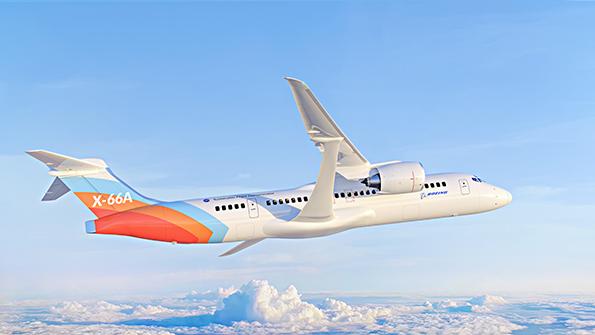
There is no denying that Boeing has lost share to Airbus in the narrowbody/single-aisle aircraft market. Once the world’s preeminent OEM in that market, it now possesses less than 40% of narrowbody/single-aisle orders versus No. 1 Airbus. While the longevity of Boeing’s 737 is impressive, the aircraft is now a bit of an anachronism. For pilots, operating the aircraft is like driving around in a 1968 Chevy Impala with a dashboard that has a tape deck and ashtray.
Consider this: The 737 is the only commercial aircraft being manufactured now without fly-by-wire controls—a staple in modern aircraft control system design. All the while Airbus continues to gain narrowbody market share, given the capability and popularity of the A220 on the low end and the A321 on the high end.
Despite some recent improvements to the 737, it is a disappointment to the broader commercial aerospace industry that Boeing has effectively shelved plans for a new clean-sheet model anytime soon. Last November, the company delayed the prospect of developing an aircraft with 20-30% efficiency gains until the mid-2030s, citing limited technology that is accessible now. However, this is far from true. In fact, conservative projections indicate that a clean-sheet model could be roughly 40% more efficient than current aircraft.
However, to capture greater capability and fuel efficiency, commercial OEMs will need to incorporate more recent innovations in aircraft design and technology that can drive enhanced performance. An unducted turbofan, fueled by more environmentally friendly sustainable aviation fuel (SAF), is efficient and clean enough to yield the level of performance expected for a next-generation aircraft. The aircraft could likely feature a high-wing configuration, enabling natural fuel pressure and larger unducted turbofan engines.
High-wing aircraft often provide increased stability, given that the center of gravity is below the wing, which allows the fuselage to act almost as a pendulum and increase lateral stability. While this configuration is not more efficient, high wings offer more ground clearance, which helps protect the engine in cases of uneven terrain and allows for larger, more efficient engines under the wing. Additionally, an enhanced airframe featuring a higher-aspect-ratio high-wing configuration (possibly featuring lift-generating truss braces) and a more aerodynamic fuselage comprising more composite materials could contribute roughly 10% greater efficiency to a new aircraft.
While noisy and somewhat cumbersome, an open-rotor/unducted turbofan engine could contribute approximately 30% of these savings through lower fuel burn. Open-rotor engine technologies have the potential to lower fuel burn and CO2 emissions substantially relative to turbofan engines with the same amount of thrust. To achieve higher propulsive efficiencies with a turbofan engine, the bypass ratio must be increased with a larger fan diameter, but this increases weight and drag of the aircraft. On the other hand, the lack of a nacelle expands the area of air on which the blades can work.
Given the capability and efficiency gap between shorter-haul narrowbody aircraft and longer-haul widebody aircraft, a clean-sheet model of this caliber should make sense in the still-underserved middle of the market. An aircraft family featuring 150-300 seats and 3,000-6,000-nm range could open the door for narrowbody upgauging (operators seeking more capable aircraft) and widebody downgauging (carriers looking for smaller, more efficient aircraft to service shorter routes). Additionally, a new midsize aircraft could unlock previously untapped demand. For instance, Boeing boasts that its 787 model opened 235 previously unserved routes. Given the versatility of a midsize aircraft in straddling short- and long-haul markets, such a model could open up a similar quantity of new routes. Altogether, this could spur demand for about 6,500 aircraft over the next two decades.
While development of a clean-sheet midsize model could take 7-8 years and require a collective investment of $15-20 billion, the returns could be significant and industry-shifting. Assuming a list price of $75 million per aircraft and 20-25% gross margins (in line with Boeing legacy platforms), Boeing stands to amass a collective gross profit of $100-120 billion, well above the required initial investment. Aside from the financial incentives, this will give Boeing an opportunity to regain its once-distinguished reputation. Furthermore, it would demonstrate that the company is still a design powerhouse with the potential to bring cutting-edge, environmentally conscious aircraft to market.
Published with permission. Copyright 2023 Bank of America Corp.






Comments
Boeing can not afford to invest 20 billion dollars today on a new product.
These issues can’t be dismissed with the word “just.” (Just do this…) These things may eventually be solved, but it’s going to take time and money to do it. Like it or not, we’re probably stuck with the current generation of narrow-body mainstays for another decade or more.
In the short term, Boeing should develop a version of the 787 to meet the needs of transatlantic crossings.
Flying over the Pond on an Airbus A320LR or A321XLR while getting stuck in these narrow bodies for 7, 8, 9 or 10 hours is an experience that you reserve for your worst enemy and more. This is the ordeal that the people at Airbus are offering to the passengers of the 21st century.
Boeing must launch an innovative program of 100 to 250 seats with a transcontinental and transatlantic radius.
Biden must find ways to finance Boeing with tens of billions of dollars and block purchases of Airbus jets by American air carriers. Joe Biden must simply imitate Macron who is stuffing Airbus with money, giving it contracts without RFP (A330MRTT, H160, etc.) and imposing Airbus planes on Air France which does not want them.